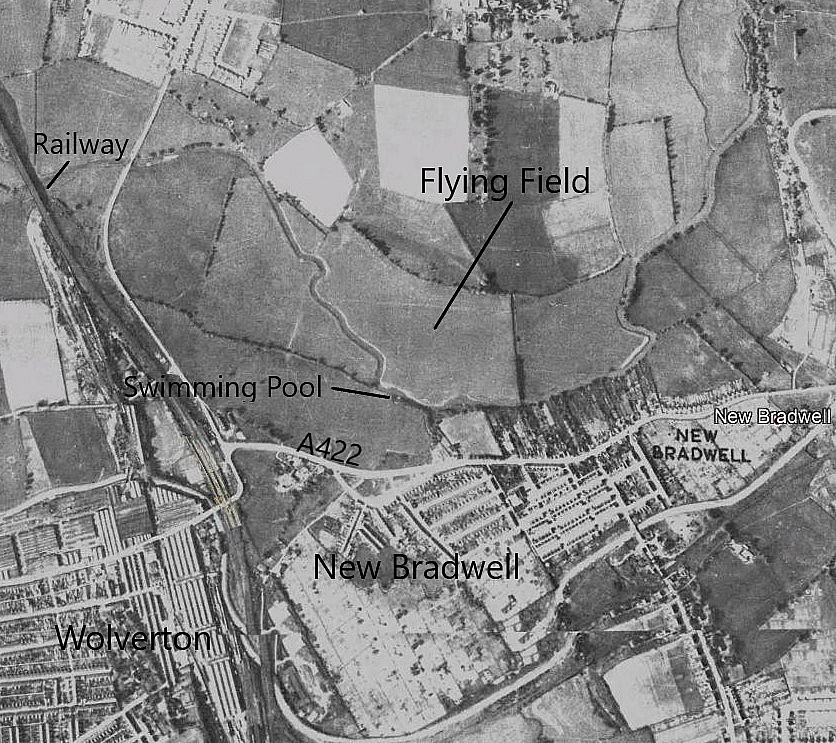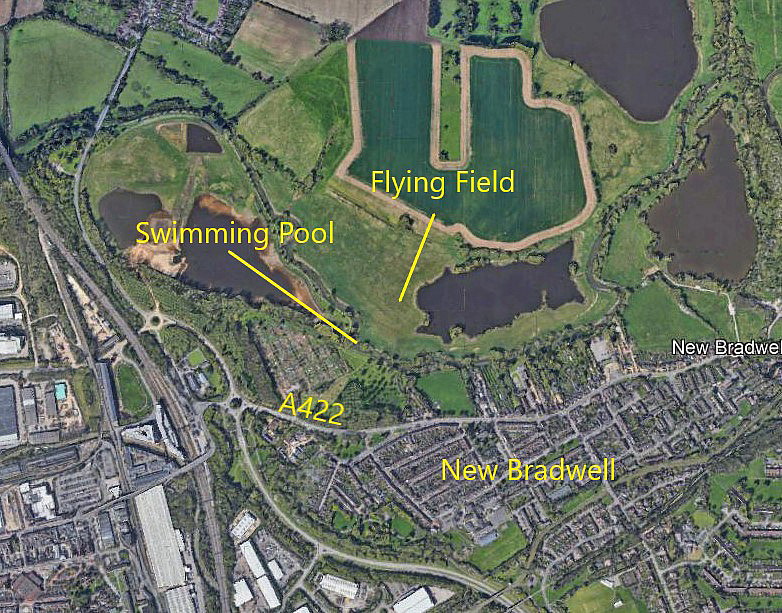Wolverton
WOLVERTON: Temporary Landing Ground
Operated by: Sir Alan Cobham
Location: In a field just N of the New Bradwell Bathing Place on the River Ouse. N of the A422, just NE of Wolverton, E of Stony Stratford and NW of todays Milton Keynes town centre
Period of operation: 18th September 1929
NOTES: WOLVERTON was the planned as the 79th venue on the 1929 Sir Alan Cobham's Municipal Aerodrome Campaign. Starting in May and ending in October this Tour was intended to visit one hundred and seven venues. Mostly in England two venues were visited in South Wales and eight in Scotland. Due to a couple of crashes and other setbacks, this became the 83rd venue. Even so, Cobham managed to visit 96 venues, which was still a magnificent achievement.
Without any doubt this Tour certainly helped to inspire several aerodromes/regional airports being constructed in the early 1930s - but not in Wolverton. It has to be questioned why Wolverton, at that time, was seen as a potential site worth visiting?
The aircraft Cobham mostly used for this 'Tour' was the ten-seater de Havilland DH61 'Giant Moth' G-AAEV, named 'Youth of Britain'. The punishing schedule he set himself seems astonishing today.
A MICHAEL T HOLDER GALLERY
The second item was published in the Northampton Mercury on the 20th September 1929.
NOTES: As a general rule, during this Tour, Cobham would first take the local dignitaries for a flight. This would be followed by local flights for selected schoolchildren, the cost being met by an anonymous donor. We now know this was Lord Wakefield of Castrol Oil fame, who had offered to pay Cobham for 10,000 schoolchildren flying throughout his Tour. Following this Cobham would take fare paying passengers, usually until dusk, presumably to help offset the costs of the Tour.
Cobham was of course, by this time, a national hero because of his epic route proving flights for Imperial Airways, and was féted wherever he went. Often a gala slap-up luncheon had been arranged, and invariably a sumptuous banguet was promised for dinner in the evening. These occassions provided Cobham the opportunity to extol the considerable benefits of having a local aerodrome/regional airport.
Milton Keynes was of course not even a glint in the eyes of developers in those days, and Stony Stratford was little more than it had been as a coaching stop during the days of horse-drawn transport. So, as mentioned above, why did the Cobham team identify this location in the UK as having considerable potential?
We'd love to hear from you, so please scroll down to leave a comment!
Leave a comment ...
Copyright (c) UK Airfield Guide





















